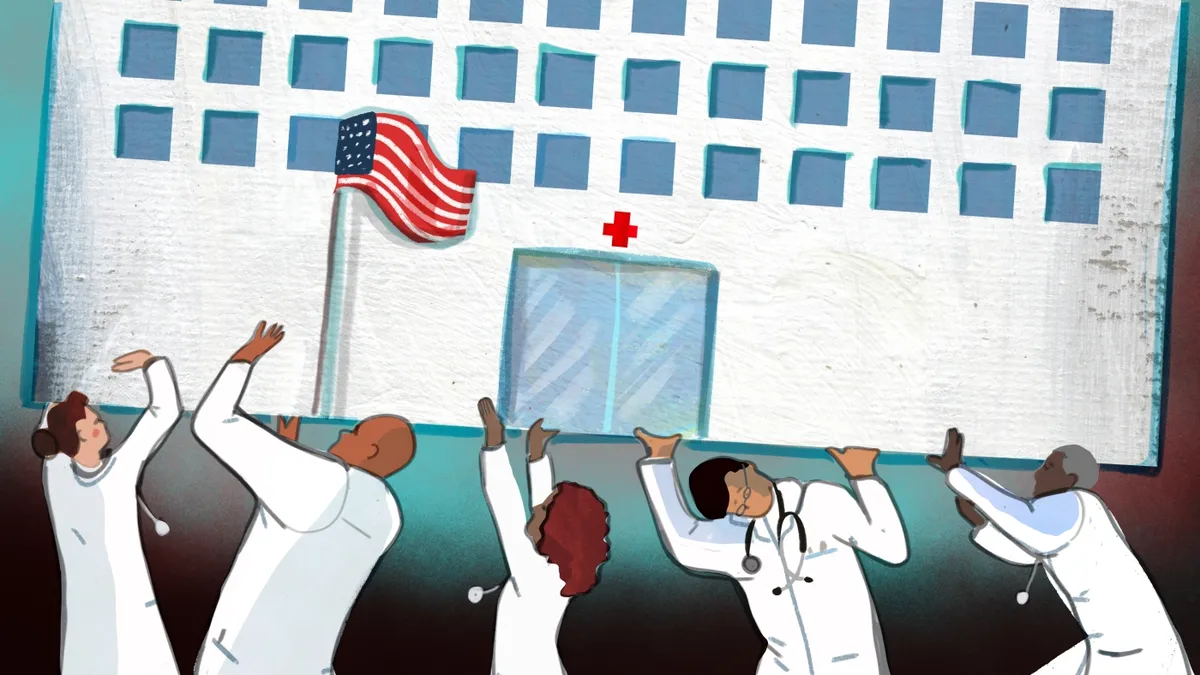
Born and raised in Toronto, Canada, Michael Liu embarked on a journey to the United States in pursuit of his dreams of becoming a physician and researcher. He viewed America as the ultimate destination for achieving his aspirations, stating, "You know, in chase of the American Dream, and understanding all the opportunities — that was such a draw for me." Liu attended the prestigious Harvard University, where he honed his skills and knowledge. Now, at the age of 28, he has established deep personal and professional roots in Boston, serving as an internal medicine resident at Mass General Brigham.
This spring, Liu faced a significant turning point when the Trump administration implemented cuts to scientific research funding at the National Institutes of Health and reduced staffing at the Department of Health and Human Services. "That was a really striking moment for me," Liu reflected. The changes prompted him to reevaluate his professional path, considering his strong connections to Toronto and his mentors back home.
In September, Liu’s concerns were further amplified when he observed the emotional reactions of his colleagues from Mexico and Costa Rica during rounds. The administration had increased fees for H1B visas — which are essential for highly trained professionals — nearly thirty-fold, raising the cost to $100,000. Witnessing the uncertainty and distress these changes caused among his peers was disheartening for Liu, who remarked, "It was terrible to see." Although he holds a green card following his marriage to an American citizen earlier this year, the recent policy shifts have made him feel that his contributions are undervalued simply because of his birthplace.
Immigrants play a crucial role in the U.S. healthcare system, comprising about a quarter of all doctors in the country. Currently, there are approximately 325,000 physicians — excluding nurses and other vital healthcare workers — who were born and trained internationally. This reliance is particularly pronounced in rural areas and certain medical subspecialties, where foreign-born doctors account for nearly half of the workforce in fields like primary care and oncology.
As the healthcare sector grapples with retirements and burnout, experts warn that recent immigration and health policies are making the situation even more challenging. Dr. Julie Gralow, chief medical officer at the American Society of Clinical Oncology, stated, "This is a real pivotal moment right now where decades of progress could be at risk." She emphasized that policies defunding scientific research and public health initiatives have damaged the U.S.'s reputation, leading to a decline in interest from top international talent.
Countries like China, Denmark, Germany, and Australia are now actively recruiting international talent, including American-born doctors and researchers, by offering stable funding and cutting-edge facilities. "American patients will feel the rippling impact from that, for generations," Gralow warned. Liu's co-authored research published in JAMA estimated that around 11,000 doctors, or roughly 1% of the nation’s physicians, currently hold H1B visas. Although this number may seem small, its implications vary significantly across geographies, with some communities relying heavily on these physicians.
For instance, high-poverty counties exhibit a four-fold higher prevalence of H1B physicians, and similar trends are observed in rural areas. Organizations like the American Medical Association have urged the administration to exempt physicians from the newly imposed H1B fees. Despite these concerns, the Department of Health and Human Services has not responded to requests for comments regarding the recent visa policies affecting healthcare workers.
For over six decades, immigrants have significantly shaped the U.S.'s standing as a leader in health research and practice. The year 1965 marked a pivotal moment, as it ushered in substantial federal investment in public health and scientific research, spurred by international competition during the Cold War. With the introduction of Medicare and Medicaid, approximately 25 million people suddenly gained access to healthcare services, resulting in an urgent demand for physicians.
The passage of the Hart-Celler Immigration and Nationality Act opened U.S. borders to skilled professionals, including doctors. Over the subsequent decade, the U.S. granted visas to 75,000 physicians, and by 1975, around 45% of all U.S. doctors were immigrants. This influx was driven by the U.S.'s unparalleled reputation, allowing it to attract more physician talent than it could produce domestically.
As the healthcare landscape continues to evolve, the challenges faced by immigrant physicians like Michael Liu underscore the critical need for policies that support and value their contributions to the U.S. healthcare system. The stakes are high, and the future of healthcare may depend on the actions taken today to retain and attract skilled medical professionals from around the world.